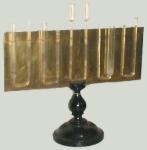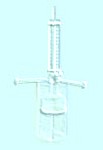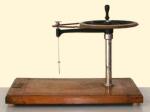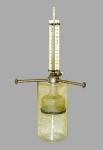School
Azuni (1),
Spano (2),
Pellegrini (3)
|
 (1) (1)
|
Function
To verify the Borelli - Jurin's law.
|
Maker:
(1) Tecnomasio - Milano
(2) Officine Galileo - Florence
(3) Lenoir - Wien
| Price:
L 22
L 90
-
| Purchase date:
1877
1931
1895
|
|
Description
(1) It is formed by four U shaped tubes, each with a branch of a one-centimeter
diameter communicating with a capillary tube. The tubes are fixed on the same table and
have a white celluloid graduated scale.
The internal diameters of the capillary branches are different to verify the
Borelli - Jurin's law.
|


 Menu
Menu













